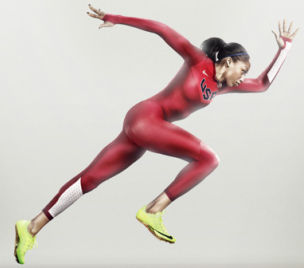It says that it selectively recruits type II fibers? Did you mean that PAP makes this happen, or explosive contractions in general? In either way, I’d like a reference because as far as I’ve read, the size principle (wihtin each muscle compartment) is pretty solid
What the heck is Post Activation Potentiation or PAP?
December 26 2012
PAP stands for post-activation potentiation. And now in English: It is the phenomenon by which muscular performance is enhanced as a result of previous contractions.

For instance, If you were to perform a 5RM back squat and then do an explosive movement, like vertical jump or sprinting you would jump higher/run faster than if you did the vertical jump or sprint without the squat.
PAP mainly enhances explosive/power movements and sub-maximal loads. It doesn’t have a large effect on maximal loads.
How do you activate PAP?
Contraction: PAP is usually elicited by a prior sub-maximal contraction (3-5 RM).
Rest Period: After a rest period of 3-10 minutes, there is an increase in power performance.
Ideal Rest Period: As a result of the conditioning contractions, there is an increase in both fatigue and performance . The rest period allows the fatigue to dissipate so that we can take advantage of the performance aspect. If you rest too long, you will dissipate the performance factor along with the fatigue. If you rest too little, the fatigue effect will negate the performance effect.
What are the mechanisms behind PAP?
Recruitment of Type 2 fibers: There is an increased activation of type 2 fibers. Fast fibers are selectively recruited when you do explosive movements.
Calcium sensitivity: The sensitivity of the muscle to calcium goes up. It is calcium which triggers muscle contraction and controls the amount of force that can be produced.
What factors affect PAP?
Here are the factors that can affect PAP from a recent meta-analysis. In the meta -analysis, they looked at 44 different studies.
Intensity: Moderate Intensity (60-85%) conditioning contractions has a greater effect than heavy intensity contractions. (>85% RM) to activate PAP
Rest Periods: Rest periods after the contractions of 7-10 min has a greater effect than rest periods of 3-7 minutes.
Multiple sets: Multiple sets of prior contractions are better than single sets
Trained vs Untrained: Trained and athletes had a greater effect than untrained. Athletes (more experience) had a much greater effect than trained (less experience) . So PAP generally increases with training experience.
What are the limitations?
Acute effect: PAP only last for a few minutes. So not much benefit for long duration events.
Individual differences: The effects of PAP is heavily dependent on the individual. In most studies, the ideal rest period after the conditioning exercise varied among the subjects. PAP also varies depending on the training experience and the proportion of type of 2 fibers.
Now how high can you jump with PAP?
This is the part which most articles and conversations about PAP somehow seems to miss. How big of a difference can PAP make?
There is usually a 3-5% increase in jump height with PAP. In a recent study, one set of 5RM squat resulted in 1.4cm increase in jump height in varsity level rugby players.
Now how big of a difference is 1.4-2 cm you may ask?
This may not sound much, but in the 2102 London Olympics, 2cm was the difference between a gold and a bronze in the Women’s high jump. Could it have a made a difference if these athletes used PAP?
Reference 1
Reference 2
Study_Flier.pdf
Related Articles
Anoop | Thu December 27, 2012
Hey Karky,
I meant explosive contractions in general.I haven’t really looked into it to much. Here is one reference that shows a preferential recruitment of fibers (animals though). Do you have anything which talks about it?
Frantislav | Wed July 24, 2013
Can this someone help with estimating the ideal rest between sets? I’ve often wondered why is it important to start your next set minutes after the previous. How exactly would it harm your training if you had pause between sets maybe 20 mins (exaggerating, but just to understand the principle)?
BTW, I’ve been following this site for a while now and it’s amazing. However I simply cannot register to the forum. Tryed it a couple of times but I wasn’t confirmed. Thanks anyway for what you are doing, Anoop!
Anoop | Wed July 24, 2013
If you rest too long, you lose the potentiating effect. If you rest too little, then the fatigue hampers the strength. And depends on what weights you are using. Generally, the weight is higher, the longer the rest time.
Thanks! What username do you use? I usually delete names which I think look like spam you know.
Frantislav | Wed July 24, 2013
Okay, thank you. I think I’ve not been using my full potential because my pauses were too short - I think there was a bit irrational fear that once the pause gets too long (over 3 minutes maybe) the exercise won’t be as effective.
I think I used this username, Frantislav. The e-mail used should be the same as well.
Anoop | Wed July 24, 2013
Hey bro could you sing up again? I think I deleted it. I am sorry. I should come with something so that I know if it is a real person maybe a message to email me.
Also, do like it on facebook or twitter or whatever you use ok.
Anoop | Thu July 25, 2013
I activated you. Now write away 😊
Frantislav | Thu July 25, 2013
Thanks, I will try my best! And I am following this site on both of them 😊






